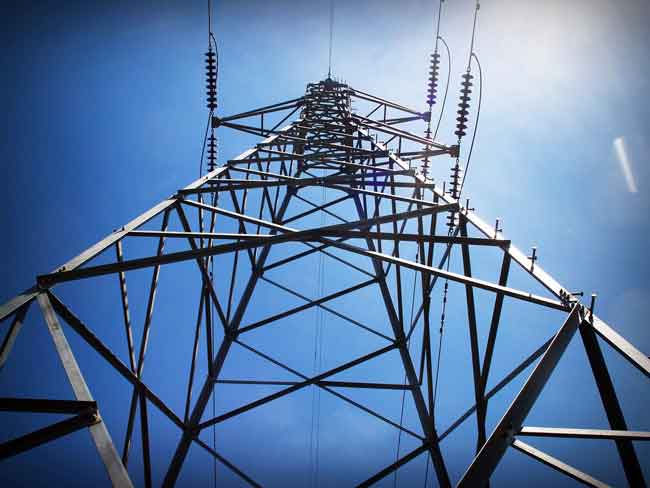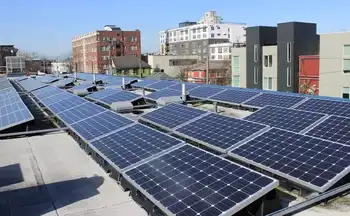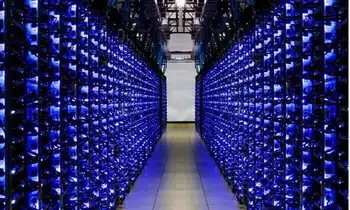Power Outage Affects 13,000 in North Seattle

Arc Flash Training CSA Z462 - Electrical Safety Essentials
Our customized live online or in‑person group training can be delivered to your staff at your location.

- Live Online
- 6 hours Instructor-led
- Group Training Available
North Seattle Power Outage disrupts 13,000 in Ballard, Northgate, and Lake City as Seattle City Light crews repair equipment failures. Aging infrastructure, smart grid upgrades, microgrids, and emergency preparedness highlight resilience and reliability challenges.
Key Points
A major outage affecting 13,000 in North Seattle from equipment failures and aging grid, prompting repairs and planning.
✅ 13,000 customers in Ballard, Northgate, Lake City affected
✅ Cause: equipment failures and aging infrastructure
✅ Crews, smart grid upgrades, and preparedness improve resilience
On a recent Wednesday morning, a significant power outage struck a large area of North Seattle, affecting approximately 13,000 residents and businesses. This incident not only disrupted daily routines, as seen in a recent London outage, but also raised questions about infrastructure reliability and emergency preparedness in urban settings.
Overview of the Outage
The outage began around 9 a.m., with initial reports indicating that neighborhoods including Ballard, Northgate, and parts of Lake City were impacted. Utility company Seattle City Light quickly dispatched crews to identify the cause of the outage and restore power as soon as possible. By noon, the utility reported that repairs were underway, with crews working diligently to restore service to those affected.
Such outages can occur for various reasons, including severe weather, such as windstorm-related failures, equipment failure, or accidents involving utility poles. In this instance, the utility confirmed that a series of equipment failures contributed to the widespread disruption. The situation was exacerbated by the age of some infrastructure in the area, highlighting ongoing concerns about the need for modernization and upgrades.
Community Impact
The power outage caused significant disruptions for residents and local businesses. Many households faced challenges as their morning routines were interrupted—everything from preparing breakfast to working from home became more complicated without electricity. Schools in the affected areas also faced challenges, as some had to adjust their schedules and operations.
Local businesses, particularly those dependent on refrigeration and electronic payment systems, felt the immediate impact. Restaurants struggled to serve customers without power, while grocery stores dealt with potential food spoilage, leading to concerns about lost inventory and revenue. The outage underscored the vulnerability of businesses to infrastructure failures, as recent Toronto outages have shown, prompting discussions about contingency plans and backup systems.
Emergency Response
Seattle City Light’s swift response was crucial in minimizing the outage's impact. Utility crews worked through the day to restore power, and the company provided regular updates to the community, keeping residents informed about progress and estimated restoration times. This transparent communication was essential in alleviating some of the frustration among those affected, and contrasts with extended outages in Houston that heightened public concern.
Furthermore, the outage served as a reminder of the importance of emergency preparedness for both individuals and local governments, and of utility disaster planning that supports resilience. Many residents were left unprepared for an extended outage, prompting discussions about personal emergency kits, alternative power sources, and community resources available during such incidents. Local officials encouraged residents to stay informed about power outages and to have a plan in place for emergencies.
Broader Implications for Infrastructure
This incident highlights the broader challenges facing urban infrastructure. Many cities, including Seattle, are grappling with aging power grids that struggle to keep up with modern demands, and power failures can disrupt transit systems like the London Underground during peak hours. Experts suggest that regular assessments and updates to infrastructure are critical to ensuring reliability and resilience against both natural and human-made disruptions.
In response to increasing frequency and severity of power outages, including widespread windstorm outages in Quebec, there is a growing call for investment in modern technologies and infrastructure. Smart grid technology, for instance, can enhance monitoring and maintenance, allowing utilities to respond more effectively to outages. Additionally, renewable energy sources and microgrid systems could offer more resilience and reduce reliance on centralized power sources.
The recent power outage in North Seattle was a significant event that affected thousands of residents and businesses. While the immediate response by Seattle City Light was commendable, the incident raised important questions about infrastructure reliability and emergency preparedness. As cities continue to grow and evolve, the need for modernized power systems and improved contingency planning will be crucial to ensuring that communities can withstand future disruptions.
As residents reflect on this experience, it serves as a reminder of the interconnectedness of urban living and the critical importance of reliable infrastructure in maintaining daily life. With proactive measures, cities can work towards minimizing the impact of such outages and building a more resilient future for their communities.











